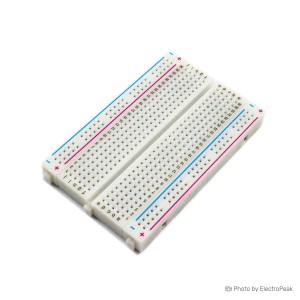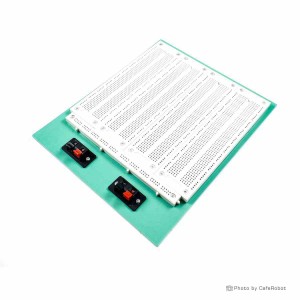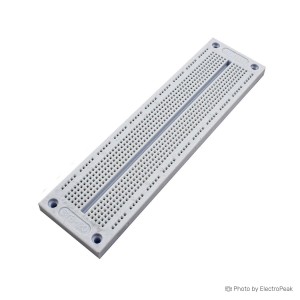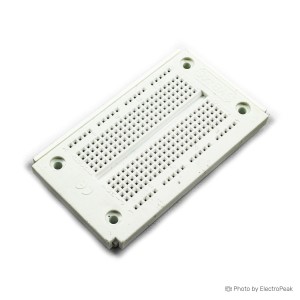Breadboards have dedicated power rails for supplying voltage to your circuit. By connecting a power source, such as a battery or a power supply, to these rails, you can provide the necessary electrical energy for your components to function.
Bread Boards
What is a Breadboard?
A breadboard is a crucial tool for electronic prototyping, providing a platform for assembling and testing circuits without the need for soldering. It consists of a grid of holes for inserting electronic components and interconnected metal strips beneath the surface, allowing easy experimentation and modification of circuit designs.
Price of Breadboards:
Breadboards are available in various sizes and configurations, influencing their prices. Larger breadboards with more points generally cost more, while mini or micro breadboards tend to be more budget-friendly. Prices vary, offering options suitable for both hobbyists and professionals.
Tips for Buying Breadboards:
When selecting a breadboard, consider the size, number of points, and any additional features like adhesive backing for stability. Choose a breadboard with enough space for your circuit and ensure the connection strips are intact. For frequent usage, investing in durable boards with quality materials is advisable.
Popular models of Breadboards:
How do I power my circuit on a breadboard?
Do I need to use jumper wires with a breadboard?
Jumper wires are commonly used with breadboards to establish connections between components. They come in various lengths and colors, making it easy to create organized and structured circuit layouts.
Can I use a breadboard for complex projects?
While breadboards are excellent for prototyping and experimenting, they may become challenging for extremely complex or long-term projects. In such cases, transitioning to a more permanent solution, like a printed circuit board (PCB), is often recommended.
Are there common mistakes to avoid when using a breadboard?
Common mistakes include using incorrect connections, not properly aligning components, and overlooking the power supply. Checking connections carefully and following a circuit diagram can help avoid these common pitfalls.




